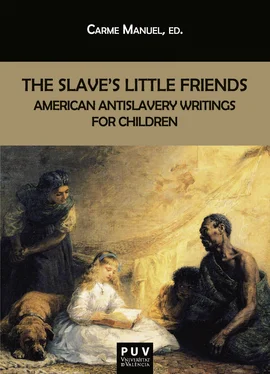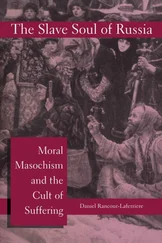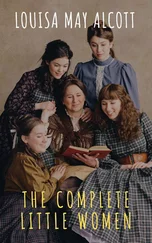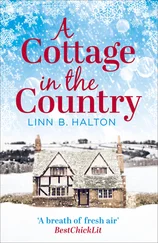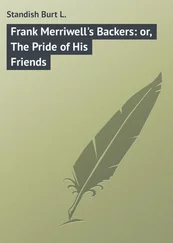Mothers in the Free States, I tell you no idle dream; I present no visionary impracticable idea. I tell you the simple truth, when I say you can, if you will, abolish slavery. The tender heart of the boy is in the hands of the mother . From her he receives his first impressions of right and wrong— impressions which remain to him through life, mingled with the memory of his first and happiest hours. When he is tempted to abandon “the highest right, to make a compromise with wrong, to adopt a time-serving policy dignified by the name of prudence and defended on the plea of necessity; then shall the memory of his mother and her faithful words come back to him—the angel of his early days. In that presence, the tempter shall stand rebuked, and take his true shape of cowardice and sin. Therefore, O my countrywomen, I call upon you, I plead with you to take up this cause with a heroic faith, a martyr-like fidelity, an unquenchable courage!
I am myself a mother. I am bound with the same ties that you are. I have counted the cost, and know what I demand of you. But the time has come when woman must come to the rescue in this land. As women, our all is at stake. We have, above every other motive, that especial call for our devotion—our children. They are, at once, the pledges of our sincerity and the tests of our courage. Let us not be found wanting.
In fact, abolitionist writings for children, as Harriet H. Alonso explains, with their portraits of “close-knit affectionate families fit in well with the nineteenth-century middle-class efforts to restructure the image of the home from the rule of the despotic father and submissive mother to one of more cooperative or ‘companionate’” (101).
In her poetry Follen had “an almost Blakean delight in, and reverence for, the visionary qualities of childish imagination,” and she is, according to Marcus Wood, “at her best as a slavery poet when she seems to speak as a child to children” (2003: 523). Robyn Russo (75) analyses the poem “Lines: On hearing of the terror of the children of American slaves at the thought of being sold,” which includes two stanzas bluntly contrasting the ideal performance of childhood and the way slavery forbids this performance. The first one presents an ideal picture of childhood which is contradicted by the second. The two sides of the same coin. Slavery does not only destroy black children’s innocence but also prevents black mothers from fulfilling their responsibilities. De Rosa argues that juvenile abolitionist literature modified this trope by presenting stories about “young victims who do not need moral reform but instead need rescue from an immoral institution” (2003: 43).
For Russo (80), Follen, like other abolitionist writers for children, aimed to raise her little readers’ sympathy, to feel for the slaves, to engage them in a personal transformation that would spur social change. In “A Pic-nic at Dedham,” she adopted the voice of a child who writes letters as part of a number of letters written by a young boy to his mother that appeared in Follen’s The Child’s Friend and Family Magazine . In this letter, the boy writes about his visit to a fair celebrating the anniversary of the abolition of slavery in the West Indies on August 1, 1834. After listening to the speeches and looking at the antislavery banners displayed at the gathering, the boy asks for his parents’ opinions on abolitionists since he has always heard them speak about their “fanaticism” and what he has discovered at the fair does not match the image he has been made to believe at home. The display opens up his eyes and his heart and he converts to the abolitionist faith: “I think if the men don’t all do something about slavery soon, we boys had better see what we can do, for it is too wicked.” Follen shows how children can become teachers to their parents as well as moral saviors of America.
The Liberty Cap closes with a biographical sketch on Agrippa Hull, the black man who served in the Revolutionary War. This African American patriot was born in 1759 and died at the age of eighty-nine in 1848, two years after Follen’s text appeared. Historian Gary B. Nash notes that he was “one of the most remarkable and unnoticed African Americans of the revolutionary era.” Yet, this sketch shows that abolitionist writers for children such as Follen attempted to preserve the memory of those black individuals who had contributed to American history and had sacrificed their lives to the cause of freedom. After her interview with Agrippa, then an old man, Follen highlighted “the acuteness and wisdom of his views” as well as his reconciliatory spirit, and ended with his comments on the righteousness of the abolitionists’ efforts, words that legitimize their crusade against slavery: “The abolitionists have the great happiness of working for a cause in which they know that they will have God on their side.”
In 1846, the same year Follen’s The Liberty Cap appeared, Hannah and Mary Townsend published their primer THE ANTI-SLAVERY ALPHABET. In The Story of A: The Alphabetization of America from ‘The New England Primer’ to ‘The Scarlet Letter,’ Patricia Crain writes that the alphabet is “the technology with which American culture has long spoken to its children and within which it has symbolically represented and formed them” (4). Abolitionist writers were aware of the crucial role of these texts and contemplated them as an ideal medium to deliver their messages and transform young Americans. The Anti-Slavery Alphabet consisted of sixteen hand-sewn pages, and its letters were colored by hand. The book was first sold at the Philadelphia Female Anti-Slavery Society fair in December 1846. This interracial society had been founded in 1833 as a sister organization of the American Anti-Slavery Society. It defended racial and gender equality, as well as the general radical principle that slavery contradicted Christianity and the American tenets of the Declaration of Independence. Similarly to other antislavery groups, its efforts were directed toward abolition. To that end, boycotts on products derived from slave labor, fairs to support help fugitive slaves, and literature to promote antislavery ideas were organized and encouraged.
The Anti-Slavery Alphabet starts with a short poem, “To Our Little Readers,” in which children, even if they are recognized to be in their early infancy, were told about their extraordinary power to change injustices in their contemporary world through a number of different ways. This “much that you can do” consisted of three strategies suited to their ages and circumstances. Firstly, they could engage themselves in the antislavery fight by confronting potential buyers of slaves and actual owners; secondly, they could become preachers of antislavery doctrines among their own peers by making use of the sentimental stories describing the brutal consequences of family separations; and thirdly, they could confront the American economy based on slave labor by joining the boycott on goods produced in the South, mainly sugar, and become antisacharist activists.
Each letter of the alphabet is transformed into a powerful carrier of an antislavery message materialized in a simple poem that could be easily memorized by the readers. The association between the letter and its antislavery meaning works as a formidable condemnation of the institution in all its aspects—the separation of families, the cruel treatment of slaves, the Christian brotherhood of all men, and the denunciation of Southerners and Northerners, as well as of products associated with slavery.
The Anti-Slavery Alphabet was reviewed and celebrated in the Quaker The British Friend : A Monthly Journal Chiefly Devoted to the Interests of the Society of Friends (September 1849, 220), and joined the ranks of those who warmly recommended the text to parents and teachers, and cherished the gratifying possibility of a new edition to be issued in Belfast, Ireland. As was customary, the journal reproduced a previously published notice. On this occasion, it took one from the Pennsylvania Freeman , since this review contained “just remarks upon the importance of enlisting the feelings of children, in very early periods of life, to sympathize with the oppressed, we cannot do better than give them to our readers.” The article started by drawing attention to the importance of primers and children’s early readings: “The depth and endurance of early impressions, and the importance of enlisting the hearts of children in every good work—both for themselves and the cause—is too generally acknowledged to need new proof or assertion. The experience of ages has tested the wisdom of the counsel. ‘In the morning sow thy seed;’ and this maxim now shapes the policy of the advocates of almost every enterprise, religious, political, or moral. There is probably no more effective enginery, either for good or evil to man, than the books for children in popular circulation. This remark applies to all civilized nations, but peculiarly to a republic where the power of the government and all the institutions of society spring directly from the people. The sagacity of the religious sects of our country long since discovered this, and suggested most extensive and active measures to secure its advantages. They have scattered their child’s book, cards, papers, primers and toy-symbols, through almost every community in the land, making every play-house and nursery into a school of moral sentiment or theological theories, and abundantly have they reaped the fruit of this labour.” The writer went on to highlight the scarcity of titles published for children on the slavery issue and, consequently, the outstanding relevance of The Anti-Slavery Alphabet : “We cannot too fully appreciate, or heartily adopt this wise policy in the spread of anti-slavery truth. We have long regretted the paucity of anti-slavery works for children, and wished that more of our writers would employ their talents and genius in supplying the deficiency. No publication has done more to gratify this wish, than the little work before us. It has already had a wide circulation, and our readers are, many of them, familiar with it; but the repeated testimonies to its excellence, which we hear from persons of intelligence and sound judgment, and our own appreciation of its merits, prompt us to allude to it again. It is admirably adapted to enlist the sympathies, and elevate the moral nature of children, while serving to amuse and instruct them. The author has done a service to her little readers, and to parents and teachers, for which she deserves their gratitude. The ‘seed’ she has sown will spring up and bear good fruit in a thousand fields which she thinks not of, and the gladness of many young hearts all over our land will be a free thank-offering to her. We cannot compare this Alphabet with the nonsensical trash of the rhyming alphabet generally put into the hands of children without wondering that the old doggerel has not long before been displaced by something more decent and refined.” This review attests to the transatlantic reception of American abolitionist writings for children and their appreciation outside the borders of the United States.
Читать дальше
